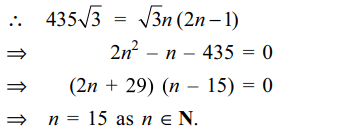1. If \[1^{2}+2^{2}+3^{2}+...+2003^{2}=\left(2003\right)\left(4007\right)\left(334\right)\]
and \[\left(1\right)\left(2003\right)+\left(2\right)\left(2002\right)+\left(3\right)\left(2001\right)+...+\left(2003\right)\left(1\right)=\left(2003\right)\left(334\right)\left(x\right)\]
then x equals
a) 2005
b) 2004
c) 2003
d) 2001
Explanation:
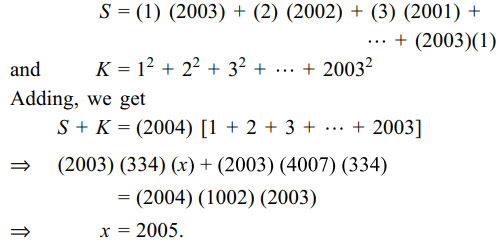
2. Sum of the series
\[\frac{1}{2^{2}-1}+\frac{1}{4^{2}-1}+\frac{1}{6^{2}-1}+....\] upto 2n terms is
a) \[\frac{n}{2n+1}\]
b) \[\frac{1}{2n+1}\]
c) \[\frac{1}{n+1}\]
d) \[\frac{4}{2n-1}\]
Explanation:

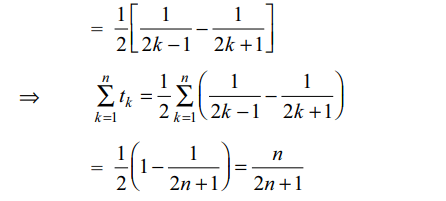
3. Let \[a_{1},a_{2},....,a_{10}\] be in A.P. and \[h_{1},h_{2},....,h_{10}\]
be in H.P. If \[a_{1}=h_{1}=2\] and \[a_{10}=h_{10}=3\] , then a5 h6 is
a) 2
b) 3
c) 5
d) 6
Explanation: Let d be the common difference of the A.P., then
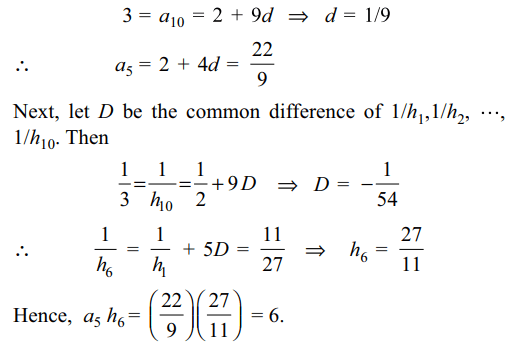
4. Suppose a, b, c are in A.P. and \[a^{2},b^{2},c^{2}\]
are in G.P. If a < b < c and a + b + c = 3/2, then the value
of a is
a) \[\frac{1}{2\sqrt{2}}\]
b) \[\frac{1}{2\sqrt{3}}\]
c) \[\frac{1}{2}-\frac{1}{\sqrt{3}}\]
d) \[\frac{1}{2}-\frac{1}{\sqrt{2}}\]
Explanation:

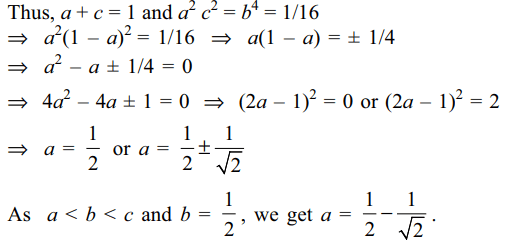
5. Let \[S_{1},S_{2},....\] be squares such that for
each n ≥ 1, the length of a side of \[S_{n}\] equals the length
of a diagonal of \[S_{n+1}\] . If the length of a side of \[S_{1}\] is
10 cm, then the smallest value of n for which Area \[\left(S_{n}\right)< 1\] is
a) 7
b) 8
c) 9
d) 10
Explanation: Let an denote the length of a side of Sn. We are given:
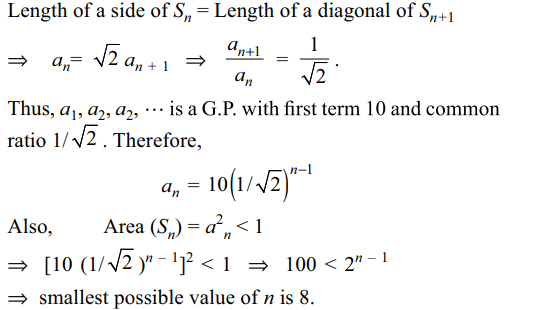
6. If a, b, c are in G.P., and log a – log 2b,
log 2b – log 3c and log 3c – log a are in A.P., then a, b, c
are the lengths of the sides of a triangle which is
a) acute-angled
b) obtuse-angled
c) right-angled
d) equilateral.
Explanation: We have b2= ac and
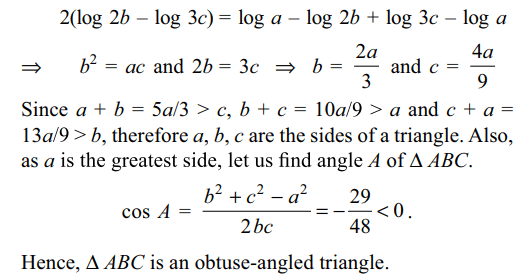
7. If \[x_{1},x_{2}...x_{n}\] are n non-zero real numbers
such that \[\left(x_2^1+x_2^2+...+x_{n-1}^{2}\right)\left(x_2^2+x_3^2+...+x_{n}^{2}\right)\leq \left(x_{1}x_{2}+x_{2}x_{3}+...+x_{n-1}x_{n}\right)^{2}\]
then \[x_{1},x_{2},...,x_{n}\] are in
a) A.P
b) G.P
c) H.P
d) A.G.P
Explanation: We shall make use of the identity
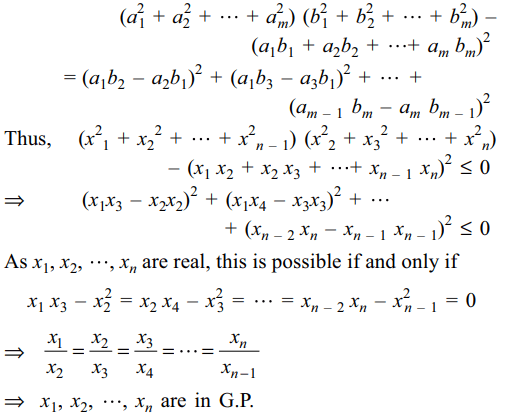
8. If three positive real numbers a, b, c
(c > a) are in H.P., then log (a + c) + log (a – 2b + c) is
equal to
a) 2 log (c – b)
b) 2 log (a + c)
c) 2 log (c – a)
d) log a + log b + log c.
Explanation: a, b, c are in H.P., b = (2ac)/(a + c). We have

9. If \[a_{1},a_{2},...,a_{n}\] are in A.P. with common
difference \[d\neq 0\] , then the sum of the series
sin d [cosec a1 cosec a2 + cosec a2 cosec a3+....+cosec an-1cosec an]
is
a) \[\sec a_{1}-\sec a_{n}\]
b) cosec a1 - cosec an
c) \[\cot a_{1}-\cot a_{n}\]
d) \[\tan a_{1}-\tan a_{n}\]
Explanation:
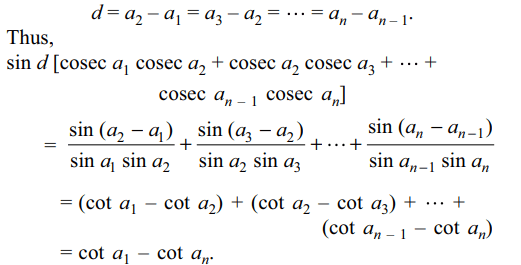
10. If sum of first n terms of the series
\[S=\sqrt{3}+\sqrt{75}+\sqrt{243}+\sqrt{507}+....\] is \[435\sqrt{3}\] , then n is
equal to
a) 14
b) 15
c) 19
d) 21
Explanation:

